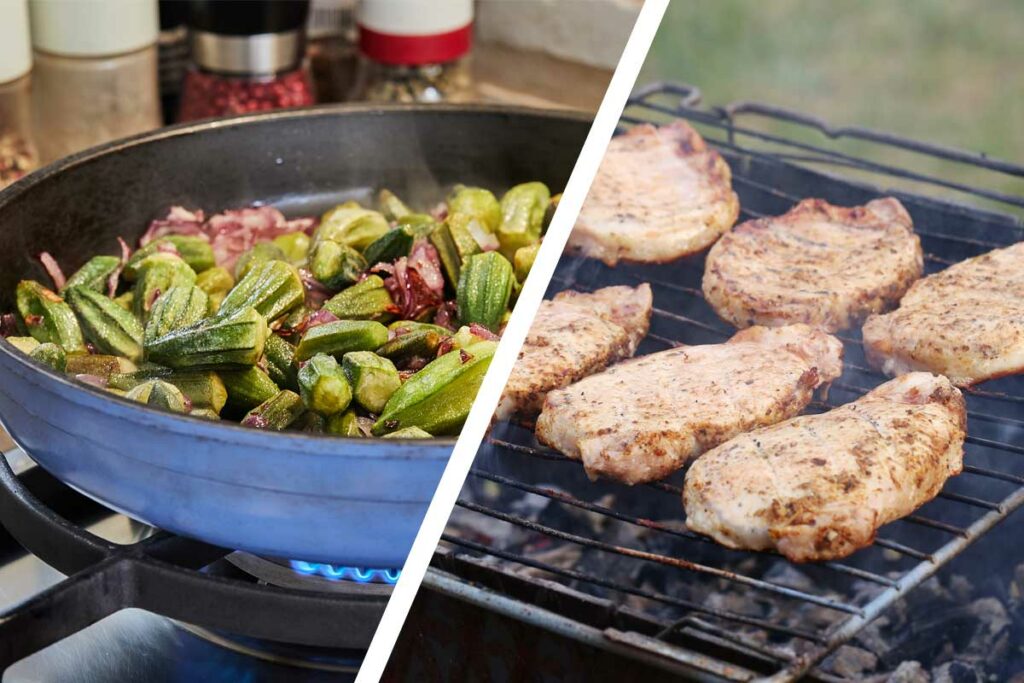
Cooking Methods
Throughout your bariatric journey, we talk a lot about meal planning and prioritizing protein and encourage you to eat fresh fruit and vegetables. The way you prepare these foods makes a big difference in the flavor and overall eating experience. Oftentimes, people can be hesitant to try new vegetables or new flavors because they aren’t sure how to prepare them. Here is a guide with everything you need to know.
Dry Heat: This includes grilling, broiling, roasting, baking and sauteing. Dry heat methods don’t require fat and use either direct or indirect heat. Grilling is a great option for a smoked, charred flavor on meats and vegetables. Broiling and roasting can create crispy textures and caramelize natural sugars found in food - delicious! Next time you go to the grocery store, pick up some vegetables and try roasting them for a new experience.
Moist Heat: Poaching, steaming, stewing, braising and boiling are all common moist cooking methods. Poaching fish in broth adds deeper flavor and steaming vegetables helps to retain extra nutrients while also maintaining a bright color.
Certain types of foods taste best when prepared with specific methods. For example, tough meats like brisket are best when prepared with slow, moist cooking methods such as braising. Vegetables like brussels sprouts or carrots have the most flavor when they’re cooked with direct heat through grilling or roasting, rather than boiling. Combining different cooking methods in your meals maximizes textures and colors. An example of a balanced meal with different preparation methods is roast chicken, boiled pasta, and steamed vegetables.
Samantha Weyhrich, Dietetic Intern
Boone Health Bariatrics and Weight Management